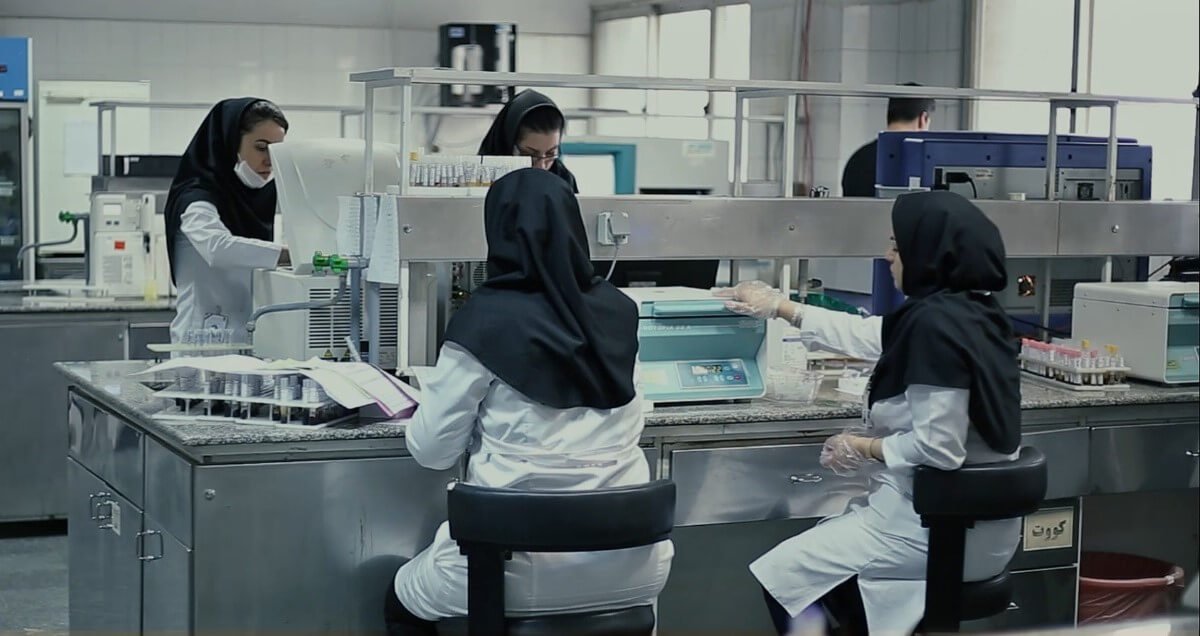Editor’s Note: Mohammad Reza Mousavi is an Iranian journalist who covered Iran for Japan’s NHK network for a decade and also worked for the Yomiuri Shimbun newspaper. He focused on Iran’s nuclear negotiations and Iran-U.S. relations but also wrote on a range of domestic topics including the economy and social and environmental issues. This is his first piece for Stimson.
By Barbara Slavin, Distinguished Fellow, Middle East Perspectives
On top of its other myriad economic problems, Iran is facing a convoluted and increasingly dire shortage of basic pharmaceuticals. A combination of high prices, low production, and lack of foreign currency liquidity has plagued the supply of drugs to the extent that, according to a recent report by Iran’s state news agency IRNA, as many as 300 types of drugs are in short supply, and about a hundred are unavailable.
At a time when the free market rate for Iran’s currency is hovering at nearly one million to the dollar, Iran’s health minister announced late last year that the government was phasing out a totally unrealistic official rate of 42,000 rials to one U.S. dollar to subsidize drug imports and planned to increase the rate to the still subsidized level of 285,000 rials to the dollar. The earlier fixed exchange rate was introduced after the U.S. withdrawal from the Iran nuclear deal in 2018 in an effort to mitigate the impact of the reimposition of economic sanctions on Iranian consumers.
Since then, according to the semiofficial Tasnim News Agency, most medicines have seen price increases ranging from 15 percent to over 150 percent, with a few drugs now 300 times more expensive. This is the result of the fact that even though Iran has historically produced almost all its basic drugs domestically, the pharmaceutical industry still requires imported raw materials.
With a high inflation rate of around 40 percent, many Iranians can no longer afford medication even when it is available. According to some reports, out of every 10 patients who stop by a drugstore to buy medicine, three abandon their purchases when they discover the checkout costs.
Mohammad A., who owns two pharmacies in Tehran and Karaj and asked to be identified only by his first name, confirmed this phenomenon in an interview with the author, adding that “an increasing number of customers leave our pharmacies without paying for their carts, and this has undermined our revenues. In fact, because our incomes have dropped sharply, we had to lay off two of our staff recently, and we may have to lay off another in March if there’s no improvement in the coming month.”
On the topic of price increases, he added that “in the last four years, some drugs have had a 50-fold price increase, as a result of a combination of currency plunge, shortage in the market, and difficulty of imports either due to economic sanctions or import bans.”
Price increases and lower sales are not the only factors behind the shortages. According to recent research quoted by Etemad newspaper, domestic production of pharmaceuticals in the first eight months of the current Persian year (which started on March 20, 2024), decreased by over 21 percent compared to the same period of the previous year. Production in Iran supplies nearly 99 percent of medicines for the Iranian market. Lack of liquidity, insufficient revenues, and power cuts due to Iran’s growing energy deficit are the main causes of declining production.
Mohammad Reza Moradi, vice president of Tehran’s Association of Pharmacists, told IRNA last month that about $35 million worth of checks to drug companies from local pharmacies have bounced. Insurance companies, for their part, are hugely in debt to pharmacies and medical doctors. This has severely impacted market liquidity and put many drug companies, pharmacies, and insurance companies on the brink of bankruptcy.
According to Mohammad A., “…due to the shortage and high prices of raw materials, pharmaceutical companies don’t find it profitable to produce with the final prices prescribed by the government, so they either don’t produce medicines, or supply their products to the black market where they can sell them with higher price tags.”
Pharmacies have been forced to ration an array of products from formula for babies to critical medication such as insulin shots. They have resorted to selling a limited amount of goods over specific time periods. In the meantime, drugs that are vital for the survival of patients afflicted by cancer, hemophilia, multiple sclerosis, and other critical illnesses are available only in government-run pharmacies and are still hard to find and expensive. Many of these medicines end up in the black market with astronomical price tags that patients struggle to afford.
Because of economic sanctions, Iran has had difficulty purchasing medicine and raw materials from foreign suppliers. Mohammad A. said that “the reliable European brands of drugs are not found in the market anymore, and the domestically produced substitutes are not as effective, and come with a plethora of side effects. For instance, Iranian antibiotics are not working at all anymore.”
In a catastrophic incident last year, domestically produced dialysis solutions that were meant to save lives resulted in the death of at least 70 dialysis patients nationwide. According to Mehr News Agency, investigations by Iran’s Food and Drug Administration found that the dialysis solutions produced by Samen Pharmaceutical Company contained staggering amounts of aluminum.
As the Iranian revolution marks its 46th anniversary, the drug shortage is only one of the numerous challenges that Iranians are facing. Without an agreement with the United States that leads to the lifting of sanctions, Iran’s currency keeps discovering new lows, and its drug shortage labyrinth is getting even more complicated.
Mohammad Reza Mousavi is an Iranian journalist and researcher based in Washington, D.C.
